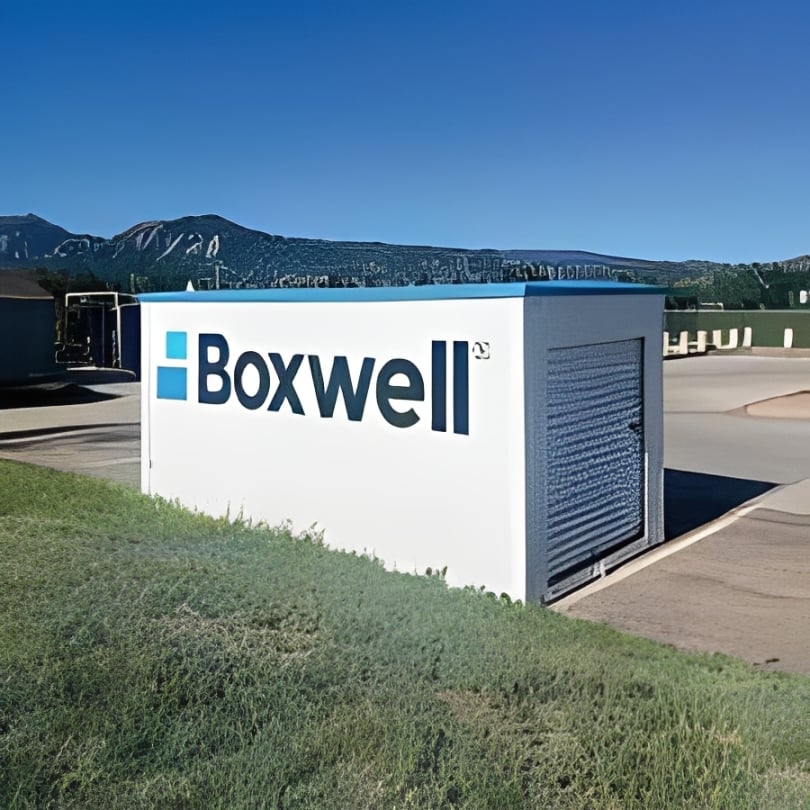Vigorous Values: Will Elevated Prices Endure In 2022?
If anyone could have looked into a crystal ball three years ago, they would have been amazed at real estate prices and transactions in the self-storage industry.
“I’ve been involved in the self-storage industry for 31 years,” says Charles “Chico” LeClaire, executive managing director of investments for Marcus & Millichap in Denver, Colo., “and I’ve never seen it as frothy as it is right now.”
“Self-Storage definitely had the most robust performance in 2021 of any of the other commercial real estate sectors,” says Chris Sonne, executive vice president for the self-storage appraisal practice at Newmark in New Port Beach, Calif., adding that the REITs reported that they were up 86 percent year over year.
Steve Mellon, managing director and self-storage group leader for JLL in Houston, Texas, says there were several factors that created the perfect storm of higher real estate values:
- Very low supply of new construction,
- Rising inflation,
- Increasing rental rates,
- Increasing development costs and supply chain issues,
- New capital entering the industry, and
- People anticipating tax code changes.
The question is: Will real estate for self-storage remain coveted this year? And, if so, how long will it be before it might crash?
Industry experts take an in-depth look at these questions.
Rising Values
Sonne says to look at where the market is today, one must note that the increases really began 25 years ago, around 1996. Between 1996 and2020, there was a 16.04 percent yield in self-storage. The industry really got noticed during and after the Great Recession, when self-storage remained a relatively stable investment.
“That led to the industry being noticed for capital institutional investments from companies and business leaders such as Bill Gates, Blackstone, and KKR,” says Sonne. “Now, self-storage is no longer considered an ‘alternative’ investment, but it is mainstream. There’s been a fundamental shift, and that partly explains the valuation increase.”
That shift led to blockbuster sales in 2021, says Nicholas Malagisi, national director of self-storage for SVN. “Last year was highlighted by blockbuster sales, including the $91 million five-property portfolio sale in central New Jersey,” he says.
Those types of huge sales are also shifting the perception that self-storage is dominated by smaller, independent owners. Prior to major institutional investments of the past few years, it was estimated that 85 percent of self-storage facilities were still owned by small, independent owners, more commonly referred to in the industry as “mom and pops.” Bill Alter, managing director for the self-storage specialty group of Rein & Grossoehme in Scottsdale, Ariz., says that while small owners still account for about 80 percent ownership now, the perception of the industry itself has changed to a more professionally managed one.
The effects of the pandemic certainly cannot be discounted as a major factor in contributing to the rising value of self-storage. According to Ben Vestal, CEO of Argus Self Storage Advisors in Denver, Colo., at first, the REITs didn’t think the pandemic would have a positive effect on self-storage, so they lowered prices.
“Then people started working and schooling their children from home,” says Vestal. “And, because people were home more, they also started remodeling. Baby boomers close to retirement also went ahead and left their jobs. People needed more space in their homes. So far, this has been a huge bump for self-storage, and we think to a certain degree, it is a bump that will continue.”
Michael Mele, vice chairman and director of the national self storge group at Cushman & Wakefield in Tampa, Fla., agrees. “I don’t know anyone who hasn’t set up a home office,” he says. “I don’t think that’s going away.”
As a result of high demand for self-storage, which increased occupancies, rental rates shot up. Additionally, millennials doubled their use of self-storage. Per Vestal, two in 10 households now use self-storage. He offers these figures in positive gains seen in the industry over the years:
2002 to 2007 – +130 percent
2007 to 2009 (during the recession) – + 5 percent
2009 to 2020 – +230 percent
The oversaturation in the market seen from 2017 to 2020 has also been absorbed, says Mele, which is another reason for increased values.
What To Expect In 2022
“I see a robust 2022,” says Sonne.
Many industry experts attended a recent Zoom panel featuring the top five REITs in the industry. “They said 2021 was one of the best years for acquisitions,” says Malagisi, “and they didn’t expect it to slow down.”
Will there be another $18 billion in transactions? “Do we have more sellers who will get off the fence as they did in 2021?” asks Mellon. “There were some really large portfolio transactions this year.”
Alter thinks there will be a flurry of sales in 2022. “I think they will be testing the cap rates,” says Alter. “I listed a property at 4.5, and I think they will get it or exceed it. In the next year, I think it sales will be predominantly one- to two-property sales.”
Vestal, who has been in the self-storage industry for 17 years, has never seen such action in the industry as he did in 2021. “Until last year, I’d only seen a few $1 billion transactions, and last year, we saw several,” he says. “I do think it will continue at least through this year.”
Most industry experts agree on this summary for 2022:
- Rental rates will return to more seasonality. “We’re already seeing it,” says Mellon. “That’s not a bad thing, but we need to be careful that we’re probably not going to see what we saw up through September of 2021.”
- Development will be curbed. “We will see properties coming on line more in comparison with 2015 through 2017,” says Mellon. “A lot of new deals won’t get built due to many reasons, including cost of land, just can’t make it pencil, and other reasons.”
- Acquisition appetite will remain strong.
“We expect 2022 to be another good year,” says LeClaire. “Will it be as record-breaking as 2021? That’s the question.”
The Unknowns For 2022
Of course, industry experts are basing their hopes and projections on how the market is right now. As we all learned in 2020, the pandemic—something almost no one except scientists even imagined—toppled life as we knew it. Something as unexpected as that could tilt the markets, but it’s more likely that something that’s anticipated could as well.
Here are some factors that could turn the tide in 2022:
- The pandemic completely disappears. This might be good for the overall economy, but if everyone suddenly started permanently returning to work and school full time and people began moving back to the cities, it could put a crimp on self-storage. This scenario seems highly unlikely, as most scientists agree that the pandemic will be with us through at least 2022 and COVID will never completely disappear.
- The national deficit’s at an all-time high. Sonne explains that this is important as the national debt to the GDP as of this writing is 130 percent. During the Great Recession, it was at what is now considered a low-90 percent. “If we wanted to qualify for the EU, we couldn’t even do that right now as they require it to be 65 percent,” he says, pointing out the deficit raised from $4 trillion in 2020 to $6 trillion in 2021, largely due to pandemic-related spending and relief. “That causes inflation to rise, and the only way to fight inflation is to raise interest rates.”
- Inflation continues to rise. As pointed out above, if inflation continues to rise, the Federal Reserve will raise interest rates, which may knock some borrowers out of deals that will no longer pencil. However, Mele points out there is an upside to inflation for the industry as well. “Overall, inflation is good for self-storage, as that allows rents to keep rising,” says Mele. “Facilities then make more money.”
- Interest rates go up. On one hand, LeClaire says that rising interest rates might put a crimp on new investments. Mele points out that rising interest rates in 2016 slowed down the transaction market, but it’s questionable if it will happen again this time. However, Vestal says buyers are less concerned these days with the debt markets. “I think lenders are more willing to lend with the promise of self-storage doing better year over year,” says Vestal.
- Results of the election. “If Congress changes in the mid-terms, we will see less turbulence in the capital markets,” says Malagisi. “So, we’re watching the 10-year treasuries and mid-term elections; we are pushing caution for 2022, but steady as we go.”
Uncertainty Beyond 2022
While there could be some volatility in the real estate market in 2022, most industry experts believe rental rates and occupancies will remain high and there will still be many institutional grabs within the industry this year.
What remains a larger question is what will happen beyond 2022. “Real estate is cyclical,” says Alter. “We’ve been on a terror for 10 years; that’s a very long time for cyclical. There will probably be a downturn, but we don’t know when.”
Experts are hesitant to use the term, “crash,” as nothing the economy has thrown at the industry in the past 20 years has caused a collapse. However, industry experts do agree that there’s one major thing that can cause the industry to slow as it did from 2018 to 2020: oversupply.
“The biggest thing that hurts our industry is oversupply,” says Mellon.
After the Great Recession, when developers and institutional investors started developing again, it’s no secret that some markets became overbuilt. “The guys who lost after that overbuilt, overleveraged, and overestimated the occupancy and put them on bad sites,” says Mele, adding that much of that supply wasn’t absorbed until demand went up during the beginning of the pandemic. “Will there be some people who get fast and loose again and become overconfident and overbuild? It’s possible they won’t play it smart and build in a location that isn’t prime or won’t do good conversions.”
Thanks to the pandemic, which caused supply chain issues and labor shortages for developers, if overbuilding does happen, it likely won’t affect the self-storage industry for two to three more years. “We will continue to see a low supply for a couple of years,” says Sonne. “In 2024 to 2025, supply might become an issue again.”
Effects Of Institutional Investors
There’s no doubt that there will continue to be more institutional investors and consolidation within the self-storage industry in 2022 and beyond. While some think this is a good thing, others have been doing some “pearl clutching,” wondering how that will ultimately change the face of an industry that has always been predominantly owned by private entrepreneurs.
Overall, it’s still estimated that 80 percent of self-storage facilities are owned by small operators. However, Mele says that number is already much smaller in the top 25 markets.
“This just mimics what’s happened in multi-family and other products,” says Mele. “On one hand, if you’re an owner and want to sell, it’s good to have the big offers coming in. However, if you are a small operator, it’s becoming harder to compete with the REITs, who have the advantage with SEO. They spend millions of dollars to keep their names at the top of the searches.”
Mele goes further, asking, “Is it better for the customer? It’s probably a better experience for the customer.”
Mellon agrees that there are advantages and disadvantages to everyone in the industry. “There’s a saying that ‘high tide raises all boats,’” says Mellon. “The high tide is the exceptional properties bringing up the industry. If you’re smaller and older, it will also bring your property value up; it’s better for the industry as a whole.”
In other words, it doesn’t matter the percentage of properties owned by small entities or institutional investors. “I don’t think we should be looking at what percentage of the industry that’s owned by institutional investors,” says Mellon. “I’ve seen more single- or two-property owners running their properties like institutional facilities, and they also demand that of their vendors. That is also good for the industry overall.”
Mellon adds, “You absolutely cannot be a Class-C facility property trying to compete in a Class-A area like you used to. You must have a great digital presence and be on top of your marketing, be cleaner, brighter, and a well-run facility.”
The good news: You can still compete by doing the items mentioned above while providing flexibility and personalized customer service—two things that institutional corporations may not offer.
More Content
Popular Posts
Recent Posts
The storage industry has long been a sound...
Despite widespread adoption of modern...
This year marks a major milestone for...
Luke Shardlow has been working in the...
Expected to reach $51.23 billion by 2030,...
Your self-storage website is the digital...
Small talk is a common part of basic...
Artificial Intelligence (AI) is firmly...










